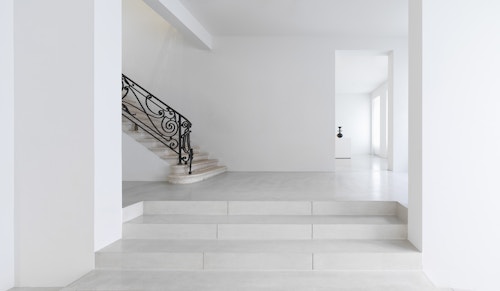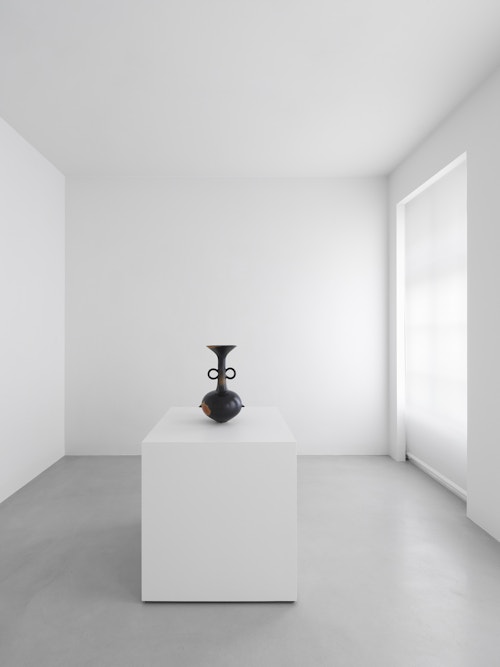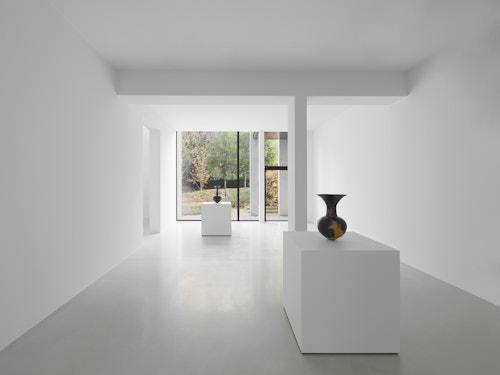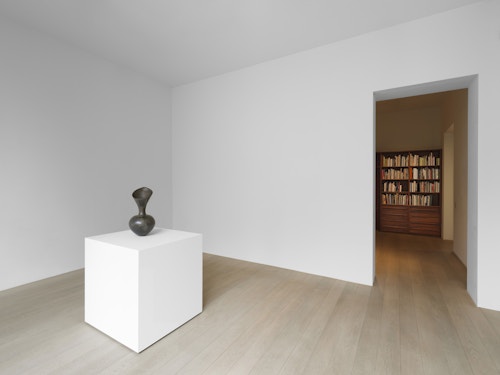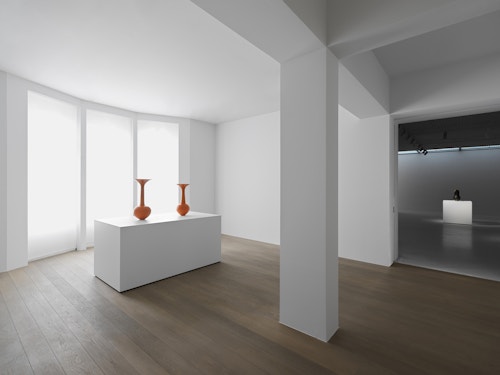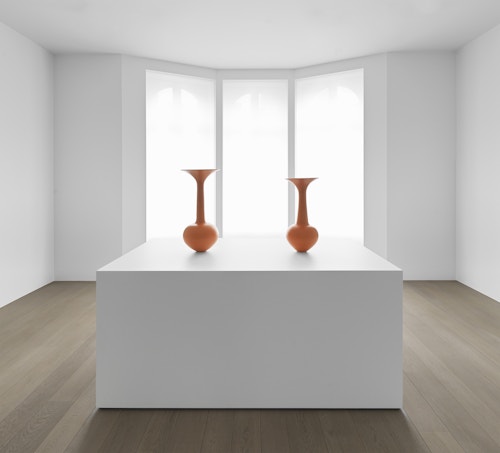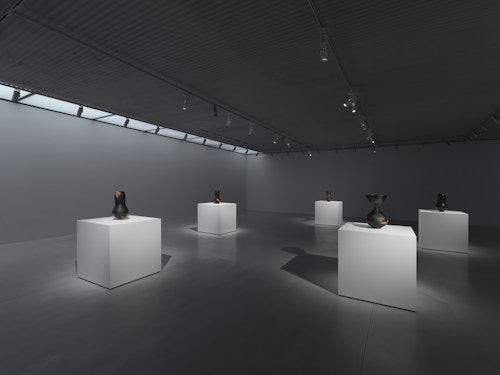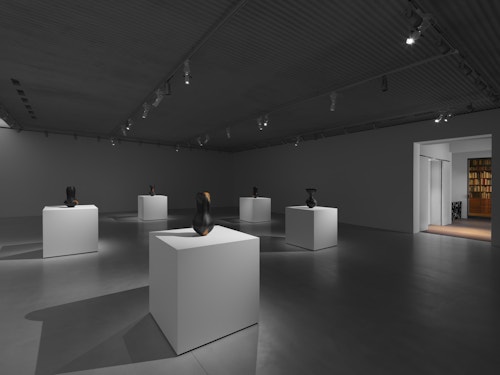
Magdalene Odundo
Xavier Hufkens is pleased to present Kenyan-born British artist Magdalene Odundo’s first exhibition at the gallery. Featuring a new body of ceramic vessels and the large-scale glass installation Transition II (2014), the exhibition showcases the two central disciplines that shape her artistic practice.
At the heart of the exhibition is a recent series of ceramic vessels, a form that has been a cornerstone of Odundo’s practice for nearly five decades. These vessels, refined in shape and rich in symbolism, draw inspiration from a wide array of global ceramic traditions—African, European, Asian, and Indigenous American – as by the human body, which Odundo likewise regards as a vessel. Her work carries a distinct anthropomorphic presence: gestures, physical states and bodily movements often serve as starting points for a vessel’s form, silhouette, proportion or balance. As one of the oldest and most universal of human-made objects, vessels transcend time, geography and culture. Moreover, they are rich with dualities: inside and outside, fullness and emptiness, fragility and strength. These oppositions echo the deeper conceptual themes in the artist’s oeuvre, such as transition, identity and cultural hybridity. For Odundo, the vessel is more than a physical object. It is an archetypal and elemental form through which to articulate relationships – between materials, histories, cultures and individuals.
The making of each vessel is a laborious and intensely physical act. Working alone, Odundo hand-builds her vessels using coiling techniques before meticulously burnishing their surfaces. The distinctive colours – typically deep terracotta and lustrous black – emerge from a controlled firing process. This slow, embodied method underscores the intimate relationship between maker and material. In Odundo’s practice, the vessel is not a static object, but a living entity. Left unglazed, the works retain a subtle porosity, enhancing their sense of life and allowing them, quite literally, to "breathe."
Also on view is Transition II (2014), a large-scale installation comprising 1001 suspended glass vessels. Each vessel is individually mouth-blown yet they are united by a formal coherence that balances repetition and variation. In contrast to Odundo’s ceramic practice, which is a solitary activity, glass-blowing is a collective endeavour. The vessels in Transition II are inspired by an ancient Egyptian glass earplug in the Petrie Museum in London, a reflection of Odundo’s ongoing engagement with historical forms and cross-cultural material references. The resulting objects appear to hover in space: weightless and precarious; they are ‘hanging by a thread’. Glass, like clay, is an ancient and elemental medium, both ubiquitous and fragile, that is transformed by fire. In a phenomenon known as the ‘melt memory effect’, it retains information about its previous crystalline structure, even after heating above its glass transition temperature. These qualities are central to Transition II, and resonate with broader themes in Odundo’s practice.
The installation draws visual and conceptual parallels with a murmuration – a phenomenon in which large flocks of starlings move in coordinated, shape-shifting formations. Within this work, each glass shape maintains its singularity while simultaneously contributing to an energetic, collective rhythm. In an era increasingly marked by fragmentation and estrangement, Transition II speaks of gathering and mutual recognition, whereby uniqueness and difference contribute to a dynamic whole.

Magdalene A N Odundo (b. 1950) received her initial training as a graphic artist in Kenya before moving to the UK in 1971. She studied at the Cambridge School of Art (now Anglia Ruskin University), the University for the Creative Arts and the Royal College of Art. In 2018, Odundo was appointed Chancellor of the University for Creative Arts (UCA) and was made a Dame in the Queen’s New Year Honours list in 2020. She has been the subject of major solo exhibitions at Houghton Hall, Norfolk, England (2024); the Gardiner Museum, Toronto, Canada (2023-2024); The Hepworth Wakefield, Wakefield, England and Sainsbury Centre, Norwich, England (2019); The High Museum of Art, Atlanta GA, USA (2017); British Council, Nairobi, Kenya (2005); Blackwell House, Bowness-on-Windermere, England (2001); The National Museum of African Art, Smithsonian, Washington D.C., USA (1995); Stedelijk Museum Voor Hedendaagse Kunst, s’Hertogenbosch, Netherlands (1994); Museum für Kunst und Gewerbe, Hamburg, Germany; and Badisches Landesmuseum, Karlsruhe, Germany (1992).





























